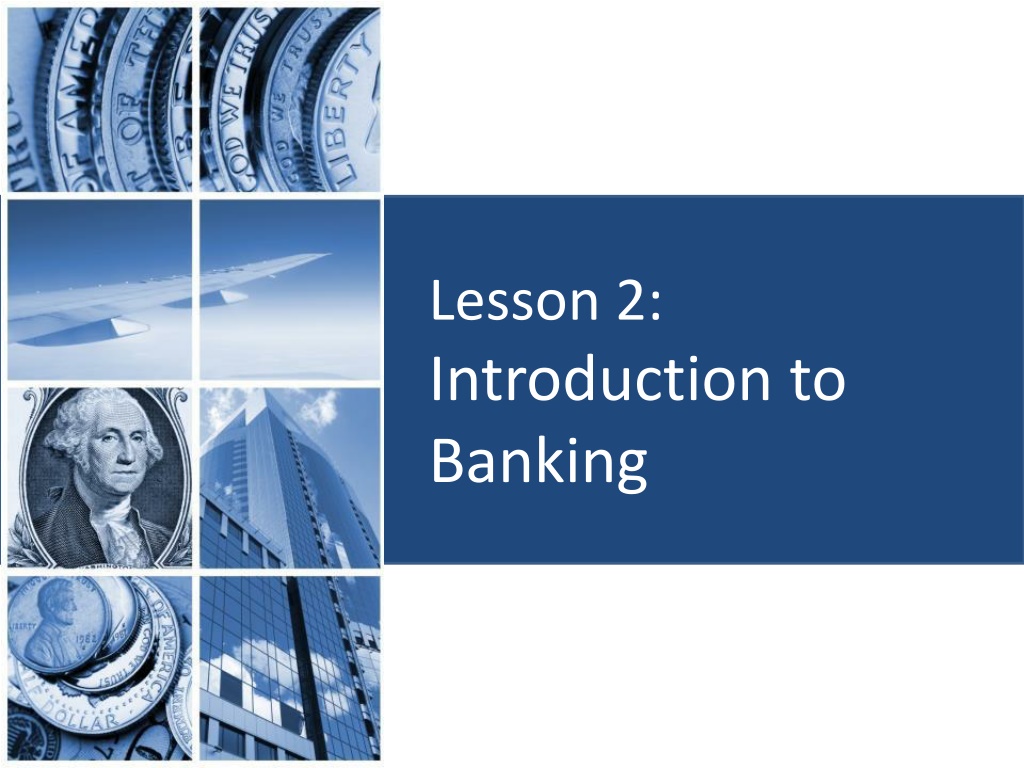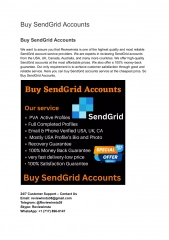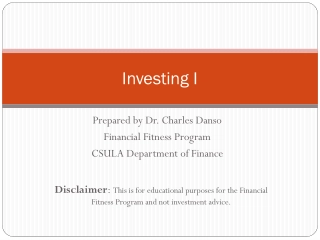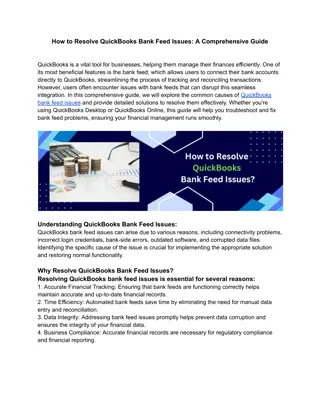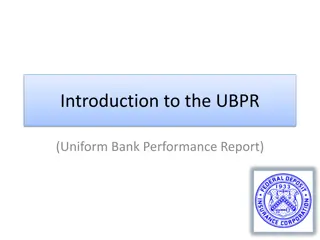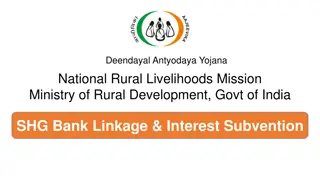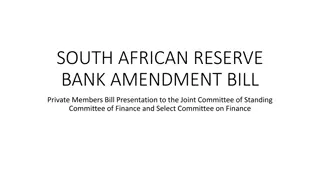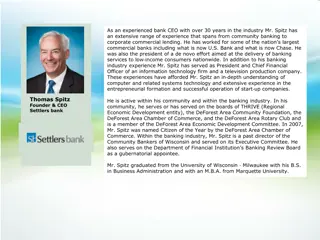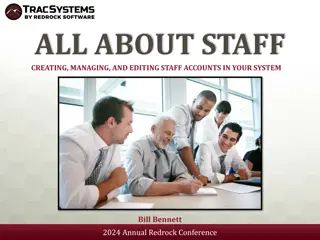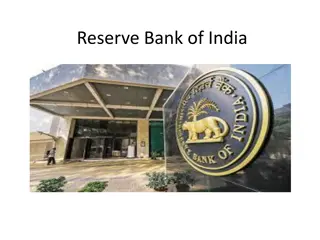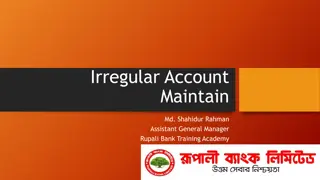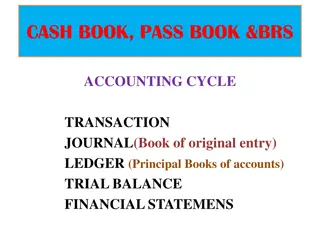Understanding Different Types of Bank Accounts
Explore the world of banking by learning about checking accounts, savings accounts, money market accounts, and certificates of deposit (CDs). Understand the features, benefits, and requirements of each account type, along with how to write a check and cash it. Improve your financial literacy and make informed decisions when managing your money.
Download Presentation

Please find below an Image/Link to download the presentation.
The content on the website is provided AS IS for your information and personal use only. It may not be sold, licensed, or shared on other websites without obtaining consent from the author. Download presentation by click this link. If you encounter any issues during the download, it is possible that the publisher has removed the file from their server.
E N D
Presentation Transcript
Lesson 2: Introduction to Banking
Objectives: Identify types of accounts Evaluate banking transactions for accuracy and completeness Determine uses for online banking
Checking Accounts Easy access to your funds. Write checks or use debit cards. Different types of accounts with different options or packages. Evaluate the different accounts terms and benefits before deciding. Many banks will require a minimum deposit of $50 - $100 to open a checking account.
Savings Accounts A place for you to save money. You can make deposits and withdrawals. Banks typically pay interest on money in savings accounts. Interest is calculated as a percentage of what you have saved. Minimum deposit required to open account. May charge fee if balance falls below specified minimum.
Money Market Accounts Banks offer customers money market accounts in order to have the funds to insure money market transactions. Similar to a savings account. Requires a higher balance to avoid monthly fees. Interest rates vary regularly based on money markets. Limited check writing privileges.
Certificate of Deposit (CD) Allows you to invest your money with a set interest rate for a pre-set period of time. Higher interest rate, as money is inaccessible. Life of a certificate ranges from a few months to several years. Early withdrawal carries substantial penalty.
Writing a Check Each check has a unique number. They will all be in chronological order. Name must be displayed. Address and telephone numbers are optional. You must write the date in this field. The amount of the check, written in currency format. The name of the person or company to whom the check is being written. The amount of the check, written in words. The name of the bank on which the check is drawn. Your signature. The check number, displayed again in 4 digit format. The nine- digit routing number. The unique account number. A description of the nature of the payment. This field is optional.
Cashing a Check If a check is written to you, it must be signed, or endorsed, before you are able to cash it.
Check Your Understanding What is missing from these checks?
Check Your Understanding What is missing from these checks?
Check Your Understanding What is missing from these checks?
Check Your Understanding What is missing from these checks?
Check Register + + A check register is extremely important for you to be able to balance your account. Being overdrawn means that you have spent more money than you have available in your account. In order to balance your account, you must record transactions in the register and then check your register against your account statement. The bank and anyone to whom you have submitted payment is able to charge you NSF, or non-sufficient funds, fees. These are also known as overdraft fees.
Check Register + +
Check Your Understanding Micah wrote a check (#1034) today for $132.50 to B&T Wireless for his monthly services. 200.00 -132.50 67.50 1034 132 50 XX/XX B&T Phone bill
When you set up a bank account, you will receive an account statement every month. Account Statements Your account statement allows you to view how you have managed your money for the month. The statement will reflect a summary of all transactions, and a breakdown of every transaction within the period. You can use this statement to balance your account against the information you have in your register. This is the easiest way to detect any errors that may occur.
Deposit Slips Depositing money means you are adding money to your bank account. Even though many transactions can be handled electronically, such as depositing a check, you still have to physically deposit cash.
Deposit Slips Pre-printed deposit slip: Blank deposit slip: Usually comes with checks and check register when opening an account. All information must be added manually. All account information is pre-printed. You must enter the date and all cash and checks being deposited.
Check Your Understanding Wanda is depositing a check for $400, but she would like $100 back in cash. Wanda L. Hess 400 00 78946102457 3/6/20XX Wanda L Hess 400 00 100 00 300 00
Check Your Understanding Jerry is depositing $150 in cash, a check for $75, and a check for $300. 150 00 75 00 300 00 Jerry Detweiler 7934618745 8/7/20XX 525 00
Withdrawal Slips When visiting a bank, you need to complete a withdrawal slip in order to withdraw funds from your account.
Check Your Understanding Are these withdrawal slips complete? 1,000.00 6318567954 One thousand and ------------------------------------ 00/100 YES John Delgado 9/12/20XX John Delgado 6318567954 Five hundred and ------------------------------------ 00/100 NO John Delgado 9/12/20XX John Delgado
Online Banking Here are some of the tasks you can complete either online or through mobile banking: Check account balances View transactions Transfer money Deposit checks Pay bills Manage account information Manage account preferences Contact the bank
Summary: Identified types of accounts Evaluated banking transactions for accuracy and completeness Determined uses for online banking
